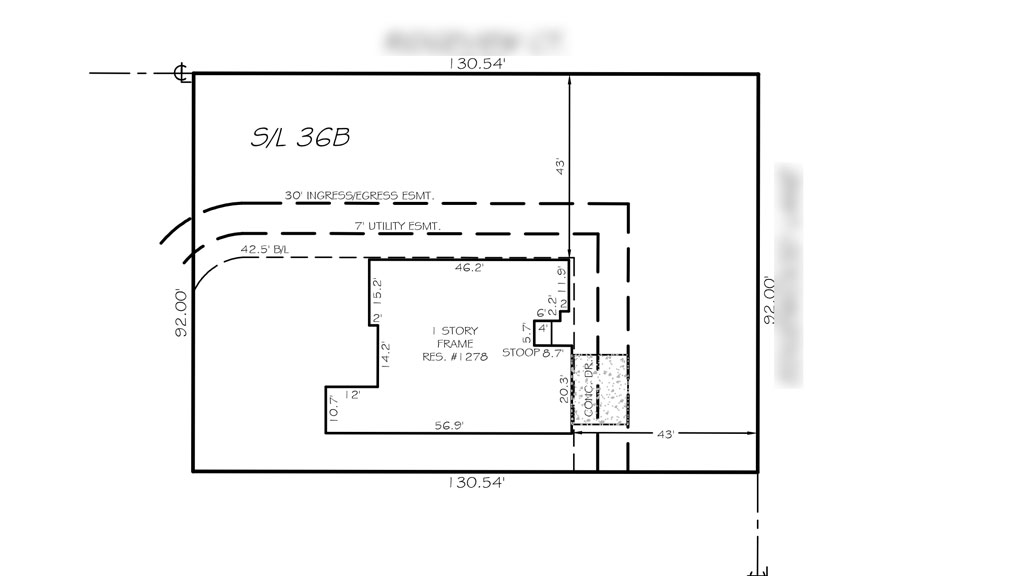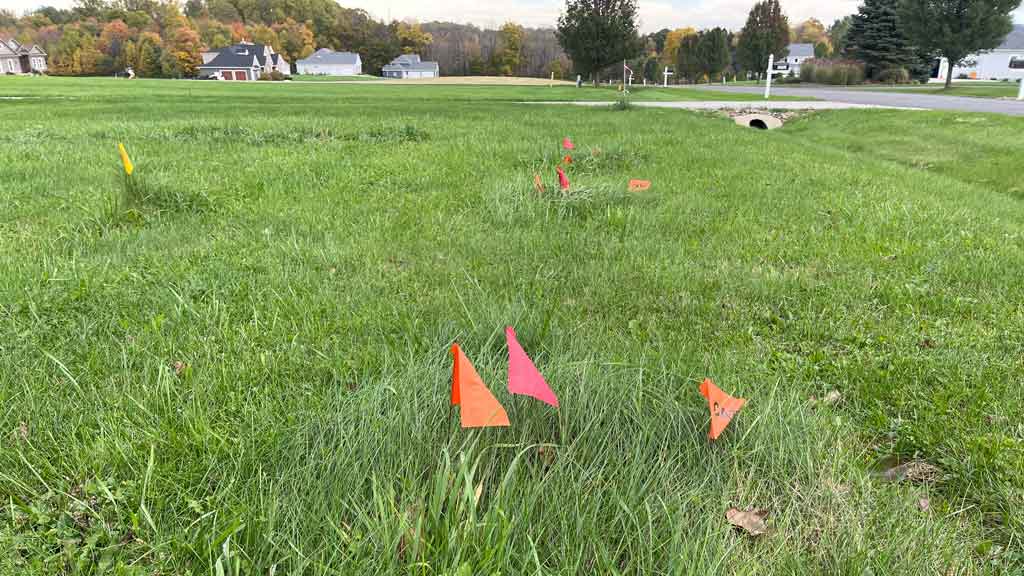
What is an easement and can you build a fence on one? In short, an easement is the legal right to use someones property or at least a piece of it. Many homeowners have easements on their properties.
However, they remain unaware of them until the time comes to do a project which involves the easement. Such as, installing a fence along the property lines of their yard.
Most easements are active. Meaning the land dedicated to the easement is in use. However, sometimes they are provisional. This means they are available for future use when needed.
With any luck, you won’t have an easement located on your property. If you do, hopefully you were made aware when purchasing the property by your realtor or title company. Many times, realtors “forget” to mention this important information when selling a house.
For those of you that do have an easement located on your property, this article will provide a better understanding of what an easement is and also explain what the most common types are. Last, I’ll discuss how they impact fence installation, location and possible layout changes.

There are many types of easements. Some are located below ground and some are located above.
However, for the sake of this article, we will look at the most common types. Specifically those types that have an influence when it comes to building a fence on an easement.
Many times easements are located on property lines and extend into the yard. From my experience, most are 5′ to 10′ in width and run parallel to the entire length of the property line. As a result effecting the location where the fence can be installed.
When it comes to building a fence on an easement, utility easements are the most common type. As the name depicts, these are areas of land for utility lines to run through.
However, these are main lines. Not like the smaller utility lines that feed your house. Utility lines found in easements are larger enough to feed an entire development. Sometimes, even an entire city.
So it is important to know where they are located. Accidental damage to large lines located in a utility easement may have tremendous impact.
Hitting one potentially effects hundreds and sometimes thousands of residents. In worst case scenarios, injury or death can occur.

Gas easements allow for main gas lines to travel across country. Almost all are below ground level. However, not always.
Yellow markers usually mark the location of the lines. Indicating the dangers below. They are maintained and inspected frequently. Either by foot, all terrain vehicle or by air.
They are wide in nature. Many times up to 40 – 60 feet wide. Even when trees are present or when the lines run through woods, the easement line will be clear.

Easements for power lines can be above or below ground. These are the lines that carry electricity. High voltage lines are very dangerous.
As a result, they usually run in the air between poles or towers. This really helps when building a fence on an easement. However, sometimes they are buried below ground level. Just like gas lines, the path they take is clear of trees.
Where possible, a gravel road will run the length of the easement allowing easy inspection. However, when the lines run through residential neighborhoods, inspection by foot is quite common.
Buried below ground level, water mains carry lots of water. A main water line is responsible for providing drinking water to many residents.
Damage to one will cause interruption to water service. Require a boil alert. And probably make a huge mess. Therefore, try to avoid hitting one. Just like gas and power lines.
However, unlike the other two utilities, life threatening ramifications are probably not a concern.
A drainage easement directs storm water to specific areas. Usually a retention pond or sewer. They are usually located on the property line.
Some have pipe lines buried below ground. With the occasional catch basin and metal grate spaced out every so often. Others are a simple swale or ditch cut into the land during grading that direct the water to another location.
There is nothing really dangerous about install a fence in a drainage easement. However, impacting the flow of water can have prolonged consequences over time.
Even worse, during heavy rain storms, drainage easements blocked by a fence can create water backups and or flooding.
Right of way easements allow someone to have access to your property, normally to allow access to an adjacent property. Sometimes referred to as a property easement. The most common type are for driveways.
Many times land locked parcels contain no access from roads. Therefore, an adjacent property owner grants a driveway easement in order to gain access. These types of easements are usually located adjacent to the property line.
Sometimes, these types are provisional. Meaning they may not currently be in use. Especially if the land locked section of property does not have a dwelling on it.
However, a driveway or right of way easement will allow access to build a future home or barn.
So, can you build a fence on a driveway easement? If you live in a municipality where a fence permit is required, chances are they will not approve a fence permit where the fence impacts the use of the easement.
However, in situations where the fence line crosses the easement perpendicularly, the addition of gates to provided future access may be all that is required in order to gain approval.
A conservation easement is a section of land that cannot be built on. Usually designated by the state or government.
Conservation easements are established in order to preserve some aspect of the land or the life that lives within the section of land.
Water quality, native vegetation, plant or tree quality or wildlife well being are common goals of a conservation easement.
So the answer you came here to find is if building a fence on an easement is allowed. My answer to you is……..sometimes. It really depends on the type and who owns it.
Most times an inspection of the fence location is required before approval is granted for a fence on an easement. Here’s how things normally work when granted permission.
For gas easements, a fence built parallel to the gas line will require staying a certain distance away from the line. A fence line that crosses the gas line on a perpendicular angle requires that the posts remain a certain distance away.
In some cases, a double gate will be required for a fence on an easement wide enough to allow access through the fence. The gas company that owns the line will have a specific set of rules and standards for fence granted on an easement.
I don’t think I have ever seen permission for a fence granted on a power line easement where the lines are located overhead.
Fences located near buried electric lines have similar guidelines as fences near gas lines. Consulting the power company who owns the line is best practice.
Water lines are not as complicated as gas and electric. However, checking with the water company is always best practice.
Even when permission is granted, the utility company that owns the easement has the upper hand.
Most companies will grant permission under the assumption that if ever the utility line should require repair or replacement, the fence located on the easement will be removed at the property owners expense.
For most homeowners, the gamble is worth not loosing valuable yard space. However, in order to prevent future legal conundrums, some cities require signing a licensed agreement in the presence of a notary when building a fence on an easement.
Drawing up this agreement usually carries a small fee. However, in most cases the price is well worth it to not have to give up valuable real estate outside of the fence.
Building a fence on an easement without permission is not advised. It can lead to costly fines or worse. In the most extreme cases, the fence on a easement will be removed at the homeowners cost.
It is always best to contact the owner of the easement in regards to granting permission for installing a fence. In many cases, permission is granted.
Certain requirements may need to be met along with certain forms or legal documents. However, in most situations just meeting the specified requirements is good enough.
For more information on finding property lines and locating easements, read our article on Property Lines and Fence Layout.